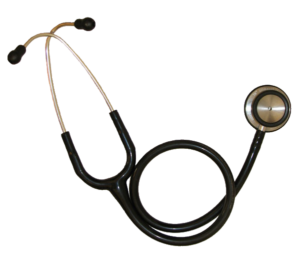 A recent study's results give hope to those who haven't really exercised or been physically active as they've gone through middle-age (it's viewed as "sedentary aging") and wonder if this dooms them in some way. Is it too late to get benefits from starting to exercise now? Studies show that being sedentary (that is, not being physically active or exercising weekly) and in "poor physical fitness" in middle-age is a risk factor for later heart failure. This is because a consequence of "sedentary aging" is stiffness of the heart, specifically the left ventricle (thus a loss of "cardiac plasticity").
A recent study's results give hope to those who haven't really exercised or been physically active as they've gone through middle-age (it's viewed as "sedentary aging") and wonder if this dooms them in some way. Is it too late to get benefits from starting to exercise now? Studies show that being sedentary (that is, not being physically active or exercising weekly) and in "poor physical fitness" in middle-age is a risk factor for later heart failure. This is because a consequence of "sedentary aging" is stiffness of the heart, specifically the left ventricle (thus a loss of "cardiac plasticity").
But the study found that after 2 years of an exercise program in (formerly) sedentary middle-aged adults, they improved their maximal oxygen uptake, decreased the heart's stiffness, and improved overall fitness. All good, even though it was a small study (only 53 people completed the study). So the bottom line is: No, it's not too late to start exercising. The heart has elasticity and can remodel itself if the exercise is started before age 65 and is done 4 to 5 times a week. The adults studied were both male and female, between the ages of 45 and 64, and exercised or were physically active for a total of 150 to 180 minutes a week, which meant at least 30 minutes 4 or 5 times a week.
Looking at the study's exercise regimen, it's clear that a variety of exercises or physical activities (low, moderate, and high intensity) is necessary. Some of the time one should be active or exercise to a point of breaking a sweat and feeling the heart pump. This meant that over time the participants increased their exercise frequency, duration, and intensity. Think about it - as you get more fit, it takes more to get your heart pumping and to break a sweat, and you can handle more exercise.
Unfortunately the "control group", who did a combination of yoga, balance, and strength training 3 times a week for 2 years did not show improvements in heart plasticity, maximal oxygen uptake, or in overall fitness.Yikes. Sooo...the study clearly shows it is worth getting off your butt and making the effort to exercise. Perhaps view it as brushing your teeth - a daily nuisance, but necessary for health. The researchers themselves stated "Exercise is medicine." From Science Daily:
Proper exercise can reverse damage from heart aging
Exercise can reverse damage to sedentary, aging hearts and help prevent risk of future heart failure -- if it's enough exercise, and if it's begun in time, according to a new study by cardiologists at UT Southwestern and Texas Health Resources. To reap the most benefit, the exercise regimen should begin by late middle age (before age 65), when the heart apparently retains some plasticity and ability to remodel itself, according to the findings by researchers at the Institute for Exercise and Environmental Medicine (IEEM), which is a collaboration between UT Southwestern Medical Center and Texas Health Presbyterian Hospital Dallas.
And the exercise needs to be performed four to five times a week. Two to three times a week was not enough, the researchers found in an earlier study..... The regimen included exercising four to five times a week, generally in 30-minute sessions, plus warmup and cool-down: One of the weekly sessions included a high-intensity 30-minute workout, such as aerobic interval sessions in which heart rate tops 95 percent of peak rate for 4 minutes, with 3 minutes of recovery, repeated four times (a so-called "4 x 4"). Each interval session was followed by a recovery session performed at relatively low intensity. One day's session lasted an hour and was of moderate intensity. (As a "prescription for life," Levine said this longer session could be a fun activity such as tennis, aerobic dancing, walking, or biking.) One or two other sessions were performed each week at a moderate intensity, meaning the participant would break a sweat, be a little short of breath, but still be able to carry on a conversation -- the "talk test.".... One or two weekly strength training sessions using weights or exercise machines were included on a separate day, or after an endurance session.
The more than 50 participants in the study were divided into two groups, one of which received two years of supervised exercise training and the other group, a control group, which participated in yoga and balance training.A t the end of the two-year study, those who had exercised showed an 18 percent improvement in their maximum oxygen intake during exercise and a more than 25 percent improvement in compliance, or elasticity, of the left ventricular muscle of the heart, Dr. Levine noted. He compared the change in the heart to a stretchy, new rubber band versus one that has gotten stiff sitting in a drawer. Sedentary aging can lead to a stiffening of the muscle in the heart's left ventricle, the chamber that pumps oxygen-rich blood back out to the body, he explained.
"When the muscle stiffens, you get high pressure and the heart chamber doesn't fill as well with blood. In its most severe form, blood can back up into the lungs. That's when heart failure develops," said Dr. Levine, who holds the S. Finley Ewing Chair for Wellness at Texas Health Dallas and the Harry S. Moss Heart Chair for Cardiovascular Research. Earlier research by UT Southwestern cardiologists showed that left ventricular stiffening often shows up in middle age in people who don't exercise and aren't fit, leaving them with small, stiff chambers that can't pump blood as well. [Original study.]
 A number of recent studies and articles have discussed the effectiveness of diet in treating or preventing depression with the main conclusion that yes, it helps. Now an observational study (that will be presented in April) found that elderly people following the DASH diet most closely were 11% less likely to become depressed over time than those that did not.
A number of recent studies and articles have discussed the effectiveness of diet in treating or preventing depression with the main conclusion that yes, it helps. Now an observational study (that will be presented in April) found that elderly people following the DASH diet most closely were 11% less likely to become depressed over time than those that did not.
 Another
Another  A
A  This is interesting, that blood pressure naturally starts lowering in the 14 to 18 years prior to death in people 60 years or older - whether they are healthy, have hypertension, have heart disease, take hypertension medicines or not.
This is interesting, that blood pressure naturally starts lowering in the 14 to 18 years prior to death in people 60 years or older - whether they are healthy, have hypertension, have heart disease, take hypertension medicines or not. There are health benefits to having a dog, based on results from studies and testimonials from dog owners. Now
There are health benefits to having a dog, based on results from studies and testimonials from dog owners. Now  Is frequent sauna bathing beneficial? That's what
Is frequent sauna bathing beneficial? That's what  OK everyone - even if you sit all day at a desk job, the research is clear: try to get up and stretch or move a little every 30 minutes.
OK everyone - even if you sit all day at a desk job, the research is clear: try to get up and stretch or move a little every 30 minutes.  Is "fat but fit" a myth or true? The results of this study suggest that it is a myth. That there is a higher risk of coronary heart disease, and even if everything looks OK initially, it is associated with an eventual metabolic changes (and problems). Just wait a while - as can be seen in the results of
Is "fat but fit" a myth or true? The results of this study suggest that it is a myth. That there is a higher risk of coronary heart disease, and even if everything looks OK initially, it is associated with an eventual metabolic changes (and problems). Just wait a while - as can be seen in the results of